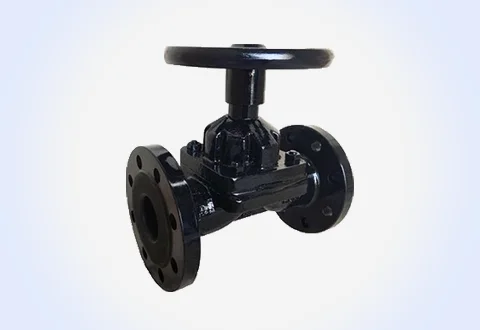
The weir type diaphragm valve has its two ports in line with each other on the opposite sides of the valve, whereas the weir type has the in/out ports located at a 90 degree angle from one another. The weir type is the most common in process applications and more commonly used as a tank bottom valve.
Series - 150 | PN10-PN16
Design Features
- It can sustain any corrosive medium in addition to the molten alkali metals and fluorine elements.
- It is ideal products used in chlor-alkali, industrial in organic chemicals, metal and mining, nitrogen and phosphatic fertilizers, petroleum refining, pharmaceutical etc
- It is not applicable for diaphragm used in medium with hard particles, which will cause diaphragm damage and leakage
- The working temperature cannot exceed the specified range
- Open the diaphragm too frequent will influence the sealing performance
Product Specifications
- Size 1/2″-16″ DN15-DN400
- Pressure Class "150" | PN10-PN16
- End Connection Flange (FF, RF), BSPT, NPT
- Body Material Cast Iron, WCB, CF8, CF8M
- Disc Material Cast Iron, WCB, SS304, SS316
- Diaphragm Material NR, PTFE, FEP, PFA
- Lined Material NR, PTFE, FEP, PFA
- Design Standard GB 12239, BS5156
- Face to Face Standard JB 1688, GB/T 12221, BS 5156
- Test Standard API 598, JB/T 9092, GB/T 13927
- Temperature Range -20℃~180℃
- Actuator Options Manual, Pneumatic, Electric
-
Structure Style
- Weir Pattern
-
Connection Standard
- Flange Drilling: GB4216, JB78, BS 4504, ANSI B 16.5